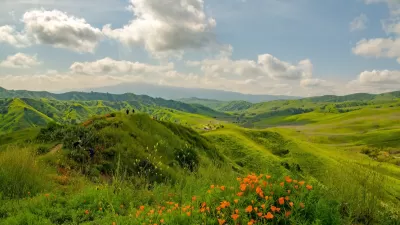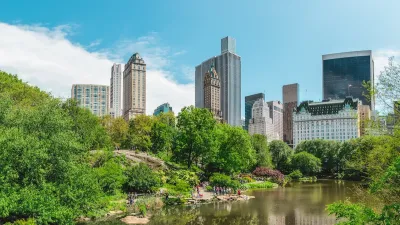The Los Angeles County Department of Parks and Recreation demonstrates how parks serve as vital community infrastructure by adapting to crises, offering public health services, disaster relief, and essential support for residents in need.

Parks are more than recreational spaces; they are critical infrastructure that supports communities in everyday life and during times of crisis. In Los Angeles County, the Department of Parks and Recreation (DPR) has played a pivotal role in addressing challenges like climate change, public health crises, and natural disasters. During the COVID-19 pandemic, DPR transformed parks into testing and vaccination sites, food distribution centers, and spaces for mental and physical well-being. Programs like Parks After Dark (PAD) in Motion and Park on the Move ensured that underserved communities had access to recreational opportunities. By leveraging its facilities and staff, DPR provided essential resources to residents, demonstrating the indispensable role of parks in public health and community resilience.
Beyond the pandemic, DPR has been instrumental in disaster relief efforts, particularly in response to California's worsening wildfires. During the Eaton Fire, DPR established Care Camps to support evacuated families, providing children with a safe space to learn and play while parents focused on recovery. The department also facilitated donation drives and partnered with organizations like the Dodgers Foundation and local museums to offer enriching experiences at no cost to affected families. Additionally, DPR organized community events such as concerts to aid emotional recovery, recognizing that parks serve as spaces for healing and social connection. These initiatives align with trauma-informed care principles, ensuring that communities receive holistic support during difficult times.
DPR’s success in crisis response is driven by its dedicated staff, innovative programming, and resilient infrastructure. From maintenance crews keeping facilities operational to recreation leaders organizing relief efforts, employees have shown exceptional commitment, even when personally impacted by disasters. As crises become more frequent due to climate change and other global challenges, DPR’s proactive and adaptive approach underscores the need for continued investment in parks and recreation. By serving as hubs for relief efforts, gathering spaces, and symbols of hope, parks remain at the heart of community resilience.
FULL STORY: Parks in Action: Meeting Community Needs During Times of Crisis

Manufactured Crisis: Losing the Nation’s Largest Source of Unsubsidized Affordable Housing
Manufactured housing communities have long been an affordable housing option for millions of people living in the U.S., but that affordability is disappearing rapidly. How did we get here?

Americans May Be Stuck — But Why?
Americans are moving a lot less than they once did, and that is a problem. While Yoni Applebaum, in his highly-publicized article Stuck, gets the reasons badly wrong, it's still important to ask: why are we moving so much less than before?

Using Old Oil and Gas Wells for Green Energy Storage
Penn State researchers have found that repurposing abandoned oil and gas wells for geothermal-assisted compressed-air energy storage can boost efficiency, reduce environmental risks, and support clean energy and job transitions.

San Antonio Remains Affordable as City Grows
The city’s active efforts to keep housing costs down through housing reforms and coordinated efforts among city agencies and developers have kept it one of the most affordable in the nation despite its rapid population growth.

What Forest Service Cuts Mean for Cities
U.S. Forest Service employees work on projects that have impacts far beyond remote, rural wilderness areas.

North Texas Transit Leaders Tout Benefits of TOD for Growing Region
At a summit focused on transit-oriented development, policymakers discussed how North Texas’ expanded light rail system can serve as a tool for economic growth.
Urban Design for Planners 1: Software Tools
This six-course series explores essential urban design concepts using open source software and equips planners with the tools they need to participate fully in the urban design process.
Planning for Universal Design
Learn the tools for implementing Universal Design in planning regulations.
Heyer Gruel & Associates PA
City of Moreno Valley
Institute for Housing and Urban Development Studies (IHS)
City of Grandview
Harvard GSD Executive Education
Salt Lake City
NYU Wagner Graduate School of Public Service
City of Cambridge, Maryland





























